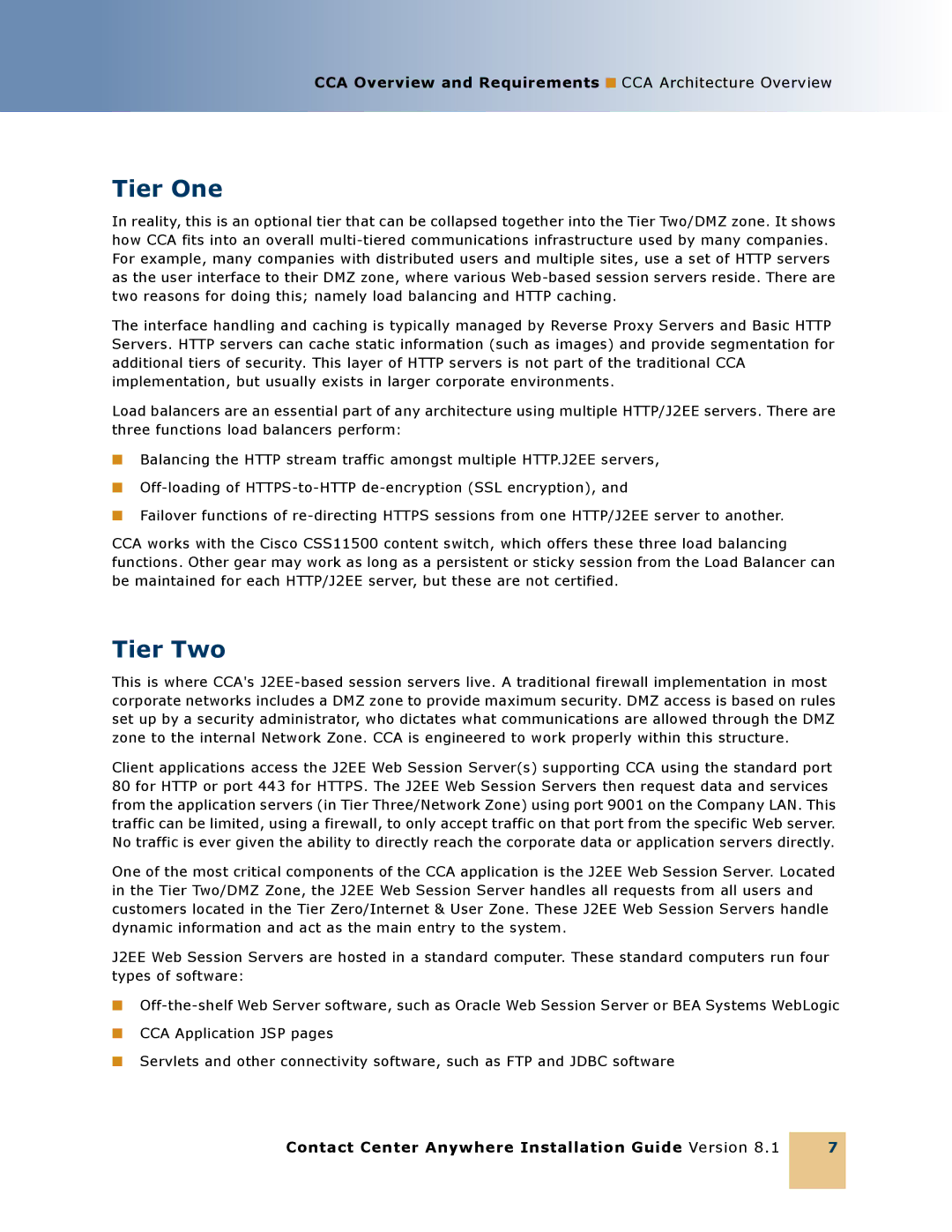
CCA Overview and Requirements ■ CCA Architecture Overview
Tier One
In reality, this is an optional tier that can be collapsed together into the Tier Two/DMZ zone. It shows how CCA fits into an overall
The interface handling and caching is typically managed by Reverse Proxy Servers and Basic HTTP Servers. HTTP servers can cache static information (such as images) and provide segmentation for additional tiers of security. This layer of HTTP servers is not part of the traditional CCA implementation, but usually exists in larger corporate environments.
Load balancers are an essential part of any architecture using multiple HTTP/J2EE servers. There are three functions load balancers perform:
■Balancing the HTTP stream traffic amongst multiple HTTP.J2EE servers,
■
■Failover functions of
CCA works with the Cisco CSS11500 content switch, which offers these three load balancing functions. Other gear may work as long as a persistent or sticky session from the Load Balancer can be maintained for each HTTP/J2EE server, but these are not certified.
Tier Two
This is where CCA's
Client applications access the J2EE Web Session Server(s) supporting CCA using the standard port 80 for HTTP or port 443 for HTTPS. The J2EE Web Session Servers then request data and services from the application servers (in Tier Three/Network Zone) using port 9001 on the Company LAN. This traffic can be limited, using a firewall, to only accept traffic on that port from the specific Web server. No traffic is ever given the ability to directly reach the corporate data or application servers directly.
One of the most critical components of the CCA application is the J2EE Web Session Server. Located in the Tier Two/DMZ Zone, the J2EE Web Session Server handles all requests from all users and customers located in the Tier Zero/Internet & User Zone. These J2EE Web Session Servers handle dynamic information and act as the main entry to the system.
J2EE Web Session Servers are hosted in a standard computer. These standard computers run four types of software:
■
■CCA Application JSP pages
■Servlets and other connectivity software, such as FTP and JDBC software
Contact Center Anywhere Installation Guide Version 8.1
7
